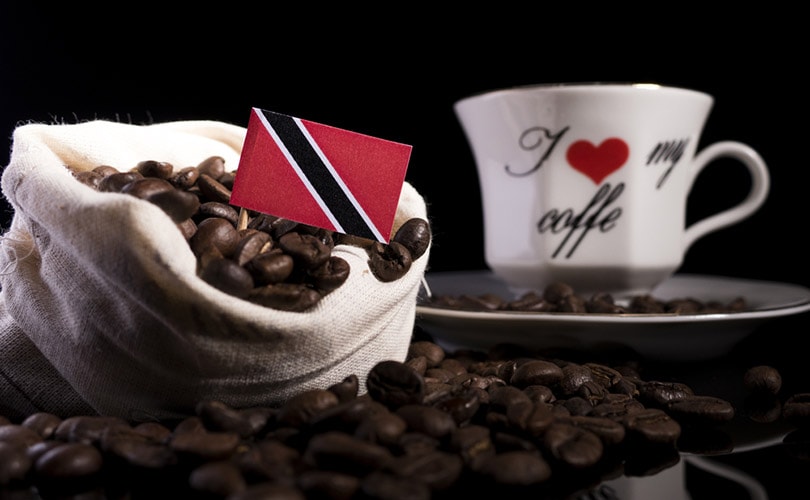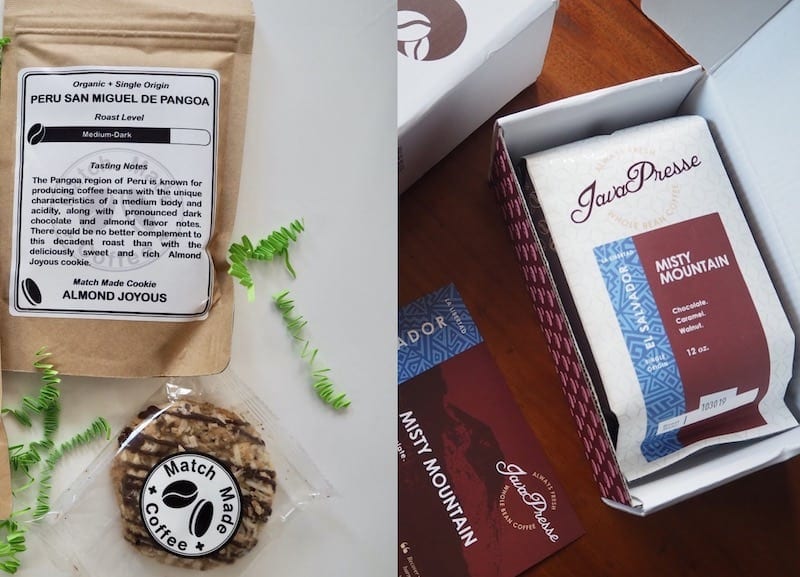
Trinidad has been home to some excellent coffee beans over the centuries, yet they have never truly cashed in on this crop. Most of their beans are consumed locally. The country’s tumultuous past has played a large role in the successes and failures of coffee farms throughout Trinidad.
In this article, we will share Trinidad’s coffee history, its brief success, and the reason this crop never took off as a major export. Not only that, but we will also give you details on the flavor profile, aroma, and what you should be looking for in coffee beans from Trinidad. Plus, we have the details on the best way to brew the beans at home.

History of Coffee in Trinidad
Trinidad is not known for its coffee trade. Instead, the Caribbean country is more notably recognized for its cocoa crop, which makes up most of its exports. However, a good portion of Trinidad’s climate is perfect for coffee plants.
As part of the bean belt close to the equator, it is the southernmost island country in the Caribbean. The northern ranges fall away to cool valleys where the beans are planted beneath the Bois Immortel for shade and moisture retention.
With all these benefits, however, Trinidad has only exported coffee beans with any significance once during their long history. With a total of only 40k pounds exported at the height of its popularity, Trinidad coffee remains one of its unknown treasures.

The Original Planters
Originally named the Republic of Trinidad & Tobago, Christopher Columbus claimed the island as a Spanish colony in the 1400s. The Spanish found the high elevation of the northern mountain range was perfect for coffee cultivation, but it often took a back seat to sugar and cocoa which were the main cash crops on the island.
Coffee was enjoyed locally with almost none of it going outside the country until the island changed hands. In 1797, the British seized Trinidad from the Spanish, and it became part of the British territories. Sugar and cocoa still took precedence until the late 1830s, though.
Also, during the mid-1800s, London was introduced to coffee, and the rise of coffee houses was unprecedented. To supply the quickly growing number of cafes in England’s capital, the British exported coffee beans from anywhere possible.
This is how, in 1838, almost 20K pounds of coffee beans were exported from Trinidad to London. Although the rise of coffee houses came as a surprise, the industry quickly righted itself. With sugar and cocoa more profitable, Trinidad’s production efforts went quickly back to the other cash crops leaving the beans to be once again enjoyed locally.
The Central Range
During much of the 1870s, the central area of Trinidad was lost and lawless. Outcasts, squatters, and peasants used the area as a place to either hide or try to survive. Either way, it was an area that was not policed nor taxed.
That changed during the end of the 1870s, however. Gov. Gordon implemented a land reform that would take back the central area of the island. As it was considered good land to farm, it was given over to poor farmers.
In exchange for the safety of the government under Gov. Gordon, the peasant farmers could live and farm the central lands in exchange for taxes. This opened up whole new areas for coffee to grow and thrive.

The Rise of Coffee in Trinidad
At the same time as Gov. Gordon’s land reform, the world market was also experiencing a huge increase in price on various commodities. The two of these circumstances combined led to the largest coffee bean export from Trinidad.
In 1883, the island sent out approximately 40k pounds of coffee beans to other ports around the world. The boost in production showed the advantages of using coffee as a cash crop, but it would never completely catch on.
The Fall of Coffee in Trinidad
At the same time coffee was being planted in Trinidad’s central lands, so was cocoa. As this chocolate-making crop produced more profits, more and more land was designated for cocoa. It wasn’t just profit either. Coffee required more labor and farming upgrades. Plus, coffee farmers were having trouble finding younger generations to take over. This left older coffee planters with nowhere to pass their knowledge.
It also wasn’t long before the world market righted itself back to an even price. The decrease in price plus fewer farmers producing coffee caused a steep decline in coffee exports. In just under five years, Trinidad went from exporting 40,000 pounds of beans to right under 4,500 pounds per year.
By the 1890s, Trinidad was back up to 20,000 pounds of coffee beans exports per year. To date, however, it has never reached the heights it did during the 1880s after the land reform and price increase.
Cocoa and sugar were not the only drawbacks to coffee farming, either. Diseases, infestations, labor shortages, war, and other hardships on the country have taken their toll. Although coffee had the potential to be a thriving industry and cash crop for Trinidad, it has never quite made it to that status.

Coffee Shops & Current Coffee Trade
Venezuelan refugees helped breathe back life into Trinidad’s coffee culture in the early 20th century. Settling in the east of the island, the refugees took to the beans and started to open small coffee shops. Many of the Venezuelan immigrants were poor without enough to eat. Acting as an appetite suppressant, the strong black coffee was a great backdrop for a place to talk and plan.
Bean roasting was done in-house and is still done that way today. Trinidad typically imports more than they export. However, Trinidad founded the Cocoa and Coffee Marketing Co-operative Society.
The society is a collaboration between the Ministry of Labor and small farmers. It is designed to improve infrastructure and enable a sustainable income for coffee cocoa farmers. The goal is to establish smaller businesses making them independent.
Although the country has suffered war, terrorism, and other devastating effects over the decades, the Society has continued to help farmers find their footing and produce some of the world’s most unique coffee.

The Flavor and Aroma of Trinidad Coffee
Trinidad coffee is hard to define. This is partly due to the small amount of export as they are not often compared to other coffees. Trinidad often roasts their own beans to keep the flavor consistent with the region.
The island primarily produces Robusta beans, and they grow over 20 varieties. This can also influence the “regional” taste and aroma, as you may get a completely different type of bean each time you give it a try.
As a general rule, however, Trinidad’s coffee has a more mild, slightly acidic coffee. You will find notes of dark chocolate, caramel, and syrup; plus, many find it to have a nutty aftertaste. Most people find it to be less bold than its counterparts, but still rich and warm.
The aroma, on the other hand, is full, almost earthy, with the same hints of chocolate and nuts that you can taste. Again, this is all dependent on the individual drinker’s perception of the brew. Some coffee lovers find it too acidic or not bold enough to suit their tastes. Others enjoy the warm, syrup-like aroma and sweet notes often found in the brew.

How To Brew Trinidad Coffee
How you brew coffee beans from Trinidad is up to your personal preference. That being said, a French press is the most popular option.
French Press
Using a traditional French press helps bring out all the different warm notes that come along with these beans. Additionally, most people familiar with these beans prefer them black or with a light splash of milk.
Cold Brew
On the other hand, the cold brew trend has also had its effect on these beans. With their sweet, nutty, and darl chocolate notes, it works really well chilled. It is important to brew them correctly, however. If you want to go the cold-brew route at home, make sure you allow them ample time in the water to extract as much flavor as possible.
Specialty Coffee
The slightly more mellow coffee is a great choice for making specialty coffees. Trinidad beans are a great option for caramel macchiatos, mocha lattes, and other similar beverages. The natural undertones of these beans are a great compliment to the additional ingredients. It creates a smoother, richer, and sweet dessert beverage.

Final Thoughts
Trinidad has had an interesting history with coffee that has gone back to the early exploration of the world as we know it. While the country has always grown and produced beans, it has never been one of its main exports.
That is likely why not a lot of people have had the opportunity to try this original brew. With its warm, nutty flavor, it is a great blend you can drink in many ways. Overall, Trinidad coffee beans have a lot to offer, and it’s well worth trying when you have the opportunity.
More bean geography guides like this:
- Galapagos Coffee: History, Flavors & Brewing Tips
- Chilean Coffee: Flavors, History, Brewing Tips
- Belize Coffee: History, Flavors & More!
Featured Image Credit: Golden Brown, Shutterstock















